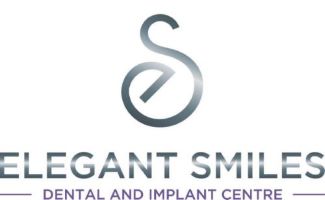A Sweet Tooth; Periodontal disease, dental caries and erosion of tooth enamel remain prevalent among society. Here’s why…
7 August 2017 by Article taken from: Dental Nursing Journal pg. 346-347, July2017, volume 13 number 7, cited by Lorraine petty
Young people are especially at risk due to the amount of sugar consumed in their diets. As a dental professional, it is important to have an up to date knowledge of nutritional recommendations in order to counsel patients. Sugars are generally divided into two types: naturally occurring (those found in whole fruit, vegetables and milk – based products) and free sugars (added monosaccharides and disaccharides, plus those naturally present in honey, syrups, fruit juices and concentrates). Free sugars can be very detrimental to health and, while foods such as fruit and dairy products can be a good source of vitamins, minerals and fibre, foods containing free sugars often have very little or no nutritional benefit.
Health experts are becoming increasingly concerned about the issues directly associated with excessive sugar consumption, including obesity and type 2 diabetes. Rates of childhood obesity are particularly worrying, with one in five children overweight or obese by the age of five – rising to one in three by the age of eleven. Obesity costs the NHS £5.1 billion per year, a figure, which is projected to rise to £9.7 billion by 2050, plus wider costs to society are estimated to reach £49.9 billion per year. Although complex interactions of genetic, metabolic, cultural, environmental, socioeconomic and behavioral factors contribute to obesity, dietary causes remain the major determinant. Furthermore, trends indicate that being overweight during adolescence continues into adulthood and increases the risk of morbidity and mortality later in life.
For a healthy, balanced diet, the majority of calories should come from starchy foods, as well as fruits and vegetables. Adults are advised not to eat more than 30g of free sugars a day, with children recommended to consume even less. Nevertheless, it is believed that the average five year old eats and drinks the equivalent of their body weight in sugar annually. As a consequence, it is no surprise that dental caries are also on the rise among this age group, with a 14% increase in three years. Free sugars are the single most specific cause of dental caries, which provide a substrate cariogenic oral bacteria to flourish and to generate enamel demineralizing acids. During the process, deminerlisation of the enamel is induced by the increasing acidity of the microenvironment surrounding the tooth. This acidity is mainly generated by a selective group of bacteria. Sucrose, or its individual monosaccharide constituents, is the main cause of biochemical and physiological changes during the process of biofilm formation. It promotes growth of mutans streptococci and other acidogenic and acid-tolerating species. After sucrose is ingested, the PH biofilm falls quickly from around neutral to 5.0 or below due to acid production by acidogenic and acid-tolerant bacteria, which leads to sustained deminerlisation of the tooth structure. The low ph induced by sucrose fermentation also drives a shift in the balance of resident plaque microflora by favoring bacteria that preferentially grow under acidic conditions at the expense of many species that are associated with sound enamel. Microorganisms associated with both caries and periodontal disease are metabolically highly specialized and organized as multispecies microbial biofilms. The progression of caries and periodontal disease involves positive feedback loops, but are driven by different stressors. In gingivitis, plaque accumulation at the gingival margin leads to inflammation and a positive feedback loop, resulting in ever increasing proportions of inflammophiles. Some highly specialized members of the community can subvert and dysregulated the host immune response, which may result in destruction of periodontal tissues in susceptible individuals. There is a wide recognition of the importance of nutrition in dental practice as patients regularly attend for oral health maintenance. Sugar consumption is causally linked to dental caries incidence, through the role of diet in the development and progression of periodontal disease is less well understood. Dental professionals are encouraged to maintain current knowledge of nutritional recommendations that are prevention-orientated and evidence based, to enable them to effectively counsel patients about proper nutrition.
As dental biofilm is a major biological determinant, effective oral hygiene is essential. Patients should be encouraged to regularly brush their teeth, as well as clean interdentally, where toothbrushes cannot reach and the majority of plaque accumulates. Ideal for those who have previously found wire interdental brushes difficult or uncomfortable to use, the wire free wisdom clean between rubber interdental brushes slide easily between the teeth and provide a gentle yet highly effective clean. Featuring a flexible, tapered design with micro-fine filaments, they are perfect for patients with crowns, bridges, orthodontic appliances or implants. Clinically proven to reduce gingival disease. These brushes are also highly recommended by dental professionals. Sugars are unnecessary and unhealthy source of calories that can cause dental caries and erosion of the dental enamel, as well as obesity and type 2 diabetes. There could also be a link between excess sugar and periodontal disease, high cholesterol, hypertension, certain cancers and non-alcoholic liver disease. A healthy diet, plus an effective oral health routine, is integral for helping patient wellbeing.
